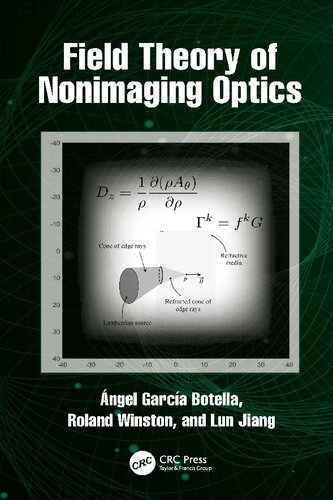

Most ebook files are in PDF format, so you can easily read them using various software such as Foxit Reader or directly on the Google Chrome browser.
Some ebook files are released by publishers in other formats such as .awz, .mobi, .epub, .fb2, etc. You may need to install specific software to read these formats on mobile/PC, such as Calibre.
Please read the tutorial at this link: https://ebookbell.com/faq
We offer FREE conversion to the popular formats you request; however, this may take some time. Therefore, right after payment, please email us, and we will try to provide the service as quickly as possible.
For some exceptional file formats or broken links (if any), please refrain from opening any disputes. Instead, email us first, and we will try to assist within a maximum of 6 hours.
EbookBell Team

4.4
102 reviewsThis book aims to overcome the traditional ray paradigm and provide an analytical paradigm for Nonimaging Optics based on Field Theory. As a second objective, the authors address the connections between this Field Theory of Nonimaging Optics and other radiative transfer theories.
The book introduces the Field Theory of Nonimaging Optics as a new analytical paradigm, not statistical, to analyze problems in the frame of nonimaging geometrical optics, with a formulation based on field theory of irradiance vector D. This new paradigm provides new principles and tools in the optical system design methods, complementary to flowline method, overcoming the classical ray paradigm. This new Field paradigm can be considered as a generalization of the ray paradigm and new accurate and faster computation algorithms will be developed. In a parallel way, the advance in the knowledge of the principles of Field Theory of Nonimaging Optics has produced clear advances in the connection between nonimaging optics and other apparently disconnected theories of radiation transfer. The irradiance vector D can be considered as the macroscopic average of Poynting vector, with a clear connection with radiation pressure. Lorentz geometry techniques can also be applied to study irradiance vector D. There are clear thermodynamic connections between the nonimaging concentrator and Stefan-Boltzmann law of radiation. From this thermodynamic connection, nonimaging optics and irradiance vector D can also be studied from a phase space point of view.
This book is intended for researchers, graduate students, academics and professionals looking to analyze, design and optimize optical systems.